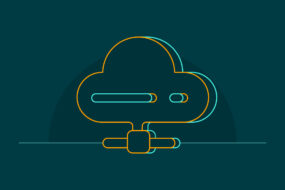
Dynamic Adaptive Streaming over HTTP (DASH), also known as MPEG-DASH, is an adaptive bitrate streaming method that enables high-quality streaming on the Internet from traditional HTTP web servers. By dividing the content into a series of brief chunks and serving them via HTTP, MPEG-DASH functions similarly to Apple’s HTTP Live Streaming (HLS) approach.
MPEG requested proposals for an HTTP-based streaming standard in 2009 to address them and create an industry specification for ABR streaming. Several companies and industry organizations coordinated to develop the MPEG-DASH standard, published in April 2012 and revised in 2019 as MPEG-DASH ISO/IEC. Therefore, MPEG-DASH, or Dynamic Adaptive Streaming over Hypertext Transport Protocol, is a streamer developed by the Moving Picture Experts Group and is a component of the general MPEG specifications for delivering video content over the Internet.
As well as HD content, MPEG-DASH is a multi-platform streaming protocol for delivering video content in various audio and video formats across multiple platforms. By segmenting the content and playing it back at the same time it is downloading, this method of streaming eliminates buffering issues commonly encountered when streaming over slow connections.
In MPEG-DASH, adaptive bitrate streaming adjusts the video stream quality to match the user’s internet connection speed, preventing or reducing buffering issues.
What Is Adaptive Bitrate Streaming?
An adaptive bitrate streaming adjusts video quality depending on the user’s connection speed. As a result, buffering issues are prevented or made less likely to occur because multiple files are produced at different bitrates and then streamed at the most appropriate bitrate according to the user’s connection.
With adaptive bitrate streaming services, providers can serve users with slower connections by reducing the video stream quality while still delivering an excellent experience to other users with faster connections.
If your website streams a video at a constant bitrate of 4000kbps, and your users’ connections are slow, they may experience buffering issues since the video will be too large for their connection to handle without experiencing buffering.
In this case, adaptive bitrate streaming is beneficial. If you stream the same video at 2000kbps instead, it will perform better for users on slower connections.
It is especially useful if your users want to choose the resolution they prefer to view video content because it gives the option of selecting the resolution they prefer. Most streaming sites can provide this flexibility because they can stream at an adaptive bit rate.
How Does MPEG-DASH Work?
MPEG-DASH streams are a technology that enables adaptive bitrate streaming by capturing and storing multimedia content and delivering that content via HTTP to a client player as a streaming technology. MPEG-DASH streams contain two types of media content, which are presented on the server in two different ways:
-
Media Presentation Description (MPD)
The MPD describes what content is available, which alternatives are available, what their URL addresses are, and what other characteristics are available.
-
Segments
Typically, the segment contains the actual multimedia bit streams in the form of chunk files, which may be contained in single or multiple files.
An HTTP server identifies the available media segments as URLs through a file called Media Presentation Description (MPD), which is the first step in providing media segments to clients.
After the client selects a media to play, the media segments can be sequentially requested to provide the client with uninterrupted playback of the presentation.
The DASH client obtains the MPD from the DASH server, which can be delivered using HTTP or thumb drive broadcasts via other means, depending on the application’s requirements.
As a result of parsing the MPD, the DASH client can determine a variety of information regarding the program timing, media content availability, resolution types, bandwidths, encoded alternatives to multimedia components, accessibility features, digital rights management (DRM) requirements, media component locations, and other characteristics of the content.
To start streaming, the DASH client selects an appropriate MPD-encoded stream from the MPD information and sends an HTTP request to the streaming server to begin the process.
To cope with network fluctuations during playback, the client monitors network bandwidth fluctuations, and buffers media segments received to adjust to these fluctuations during playback.
The MPD provides multiple URLs for the same segment depending on whether the MPD is providing a live stream or a video-on-demand stream. A live stream can be used to determine the length of each segment.
The MPEG-DASH combines delivery formats into DASH profiles, which are identified by unique uniform resource names (URNs) in the MPD. Each segment can contain information on UTC, which assists clients in controlling their clock drift.
Features of MPEG-DASH
MPEG-DASH has many features that make it attractive to streaming website owners because it gives them a variety of video options. Let’s take a look at a few of the features:
- An international community develops MPEG-DASH continuously and is widely supported by player companies. MPEG-DASH is a superior video streaming technology due to its continually improved features and bug fixes.
- Video-on-demand, as well as live streaming are both supported by MPEG-DASH.
- The MPEG-DASH is codec-agnostic and works well with H.264/AVC, AV1, or other codecs.
- There is support for MPEG-TS (Transport Streams) and fragmented MP4 containers in MPEG-DASH.
- The MPEG-DASH protocol allows for the insertion of advertisements on both the server and the client sides.
Benefits of Using MPEG DASH
The MPEG DASH standard offers several benefits that make it an important component of video streaming services. MPEG DASH is compatible with the HTTP protocol, which powers virtually all of the web content available today.
Many of the contents on the internet today are delivered over the HTTP protocol. This results in using standard web servers to deliver MPEG DASH streams to your users, ensuring that they receive maximum speed while keeping your expenditures to a minimum.
One of the advantages of MPEG DASH is the widespread support it receives from almost all of the common operating systems and browsers on smart devices. Regardless of whether your audience uses an iPhone, an Android smartphone, a Windows operating system, or a Mac computer, the video stream will work without difficulty as long as they are connected to the internet.
For your business to be successful, you must ensure that the video stream you use has the finest quality, so your viewers are kept on edge and a positive impression of your organization is left in their minds for a long time. A poor-quality video is one of the viewers’ most significant sources of dissatisfaction. It is more likely to make the viewer leave the broadcast without actually hearing the message that it intends to convey.
In using MPEG DASH, you are assured that your video will reach the right audience at the best quality possible, which is crucial to the success of your business. Also, by using MPEG DASH, you can develop a brand image among your customers, encouraging them to engage with your products and services.
As MPEG DASH is capable of streaming videos at a variety of bitrates, it will be possible for your users to watch your videos in the best quality regardless of their Internet connection. As a result, your users can watch the video at any time, regardless of the speed of their Internet connection.
Due to this reduction in lags and excessive buffering, which are both irritating and frustrating, clients can hear your message through media more effectively. MPEG DASH is a technology that is sufficient in strength and convenience when it comes to its implementation. MPEG DASH is also equally reliable for content creators and users due to its absolute stability.
Which Players Support MPEG-DASH?
MPEG-DASH video files are supported by many players and can be viewed on different devices. MPEG-DASH videos can be played on various devices through native applications and web browsers (such as Android Exoplayer, Roku, and SmartTV), while others can be played on a range of devices through native applications or web browsers.
There are several MPEG-DASH-compliant players on the market, including the following:
- DASH.js
- VideoJS with a MPEG-DASH plugin or VideoJS7 with native DASH playback.
- Bitmovin
- THEOPlayer
- CastLabs
- JWPlayer
- NexPlayer
- Radiant Media Player
- Android Exoplayer
- Roku
Conclusion
In a new ISO standard, MPEG-DASH stream intelligence is provided on the client side, enabling a scalable architecture and reducing distribution costs since HTTP infrastructure is readily available to provide cost-effective distribution methods.
Various manifest and segment formats have been used in previous adaptive streaming technologies, such as Apple HTTP Live Streaming and Apple HTTP Live Streaming for movies and TV shows. So, all devices must be able to receive content from proprietary servers by supporting the appropriate protocols. In contrast, MPEG-DASH offers a set of features that allow standard-based clients to access content from any standards-based server.
If you’re interested in video streaming and want to know more about it visit ArvanCloud Video Platform. You can also sign up for a FREE package of this product for video streaming purposes.






